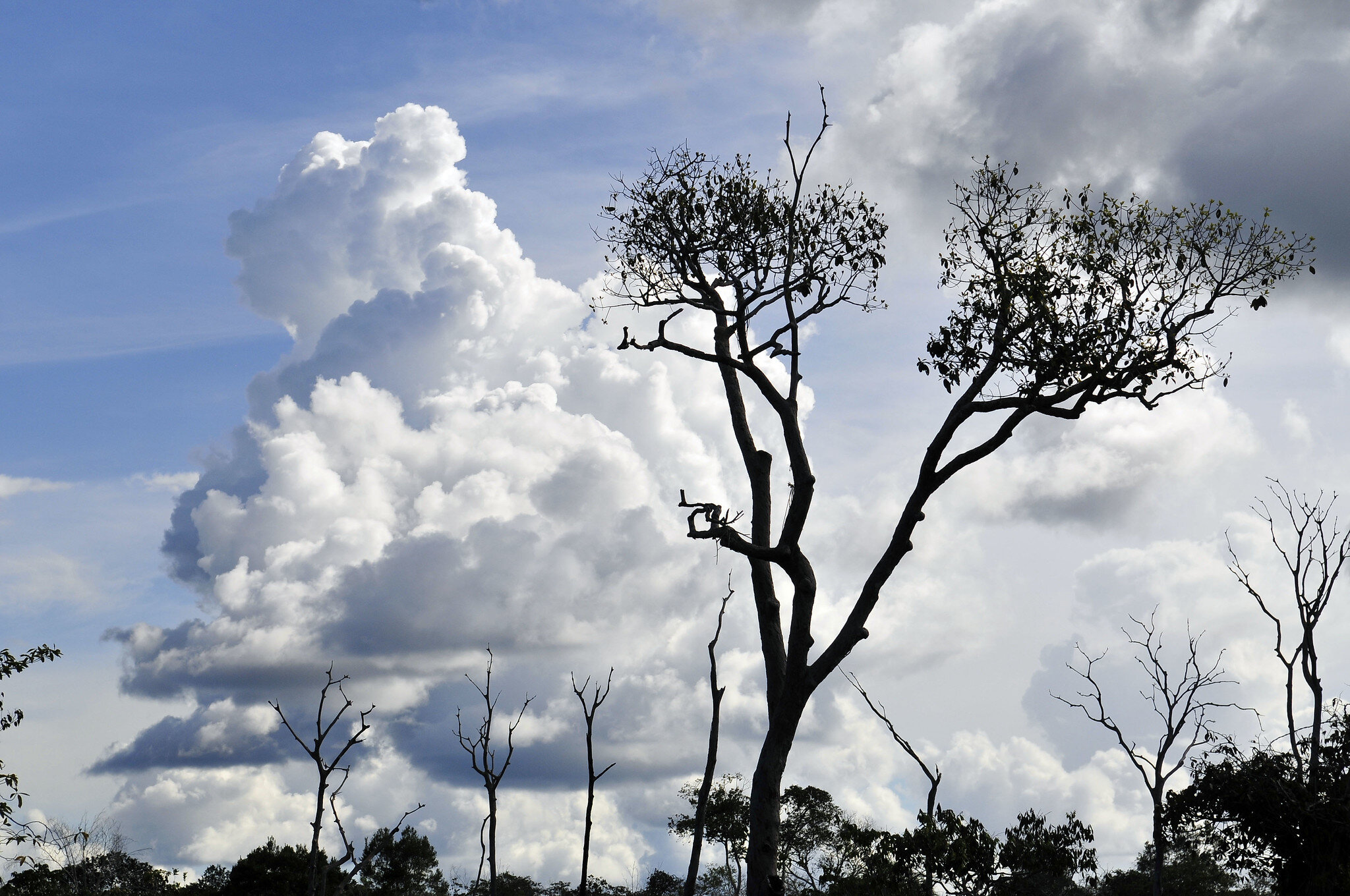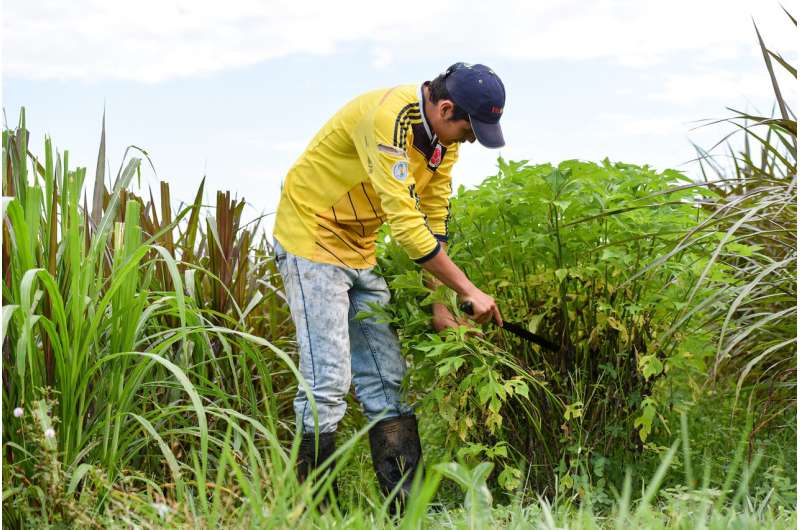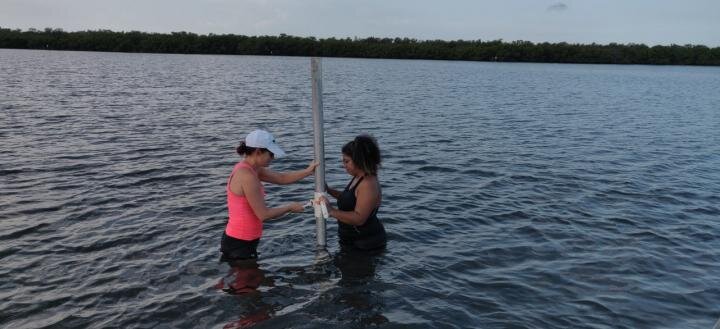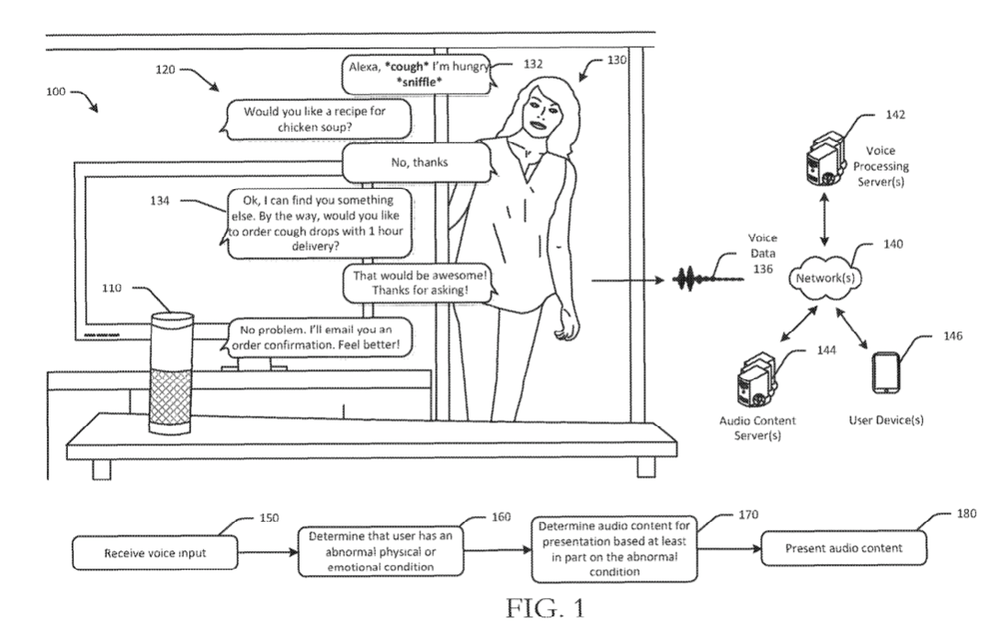#Restoring biodiversity in deforested ranches one tree at a time

Table of Contents
“Restoring biodiversity in deforested ranches one tree at a time”
by The Alliance of Bioversity International and the International Center for Tropical Agriculture </p><div>
<div class="article-gallery lightGallery">
<div data-thumb="https://scx1.b-cdn.net/csz/news/tmb/2022/restoring-biodiversity.jpg" data-src="https://scx2.b-cdn.net/gfx/news/hires/2022/restoring-biodiversity.jpg" data-sub-html="A case study in the Amazon identifies restoration approaches. Credit: Alliance of Bioversity and CIAT / N.Palmer">
<figure class="article-img"><img src="https://scx1.b-cdn.net/csz/news/800a/2022/restoring-biodiversity.jpg" alt="Restoring biodiversity in deforested ranches “one tree at a time&quot;" title="A case study in the Amazon identifies restoration approaches. Credit: Alliance of Bioversity and CIAT / N.Palmer" width="800" height="530"/><figcaption class="text-darken text-low-up text-truncate-js text-truncate mt-3">
A case study in the Amazon identifies restoration approaches. Credit: Alliance of Bioversity and CIAT / N.Palmer
</figcaption></figure></div>
For decades, there has been a debate raging in conservation science: what is better when it comes to conservation or landscape rehabilitation: a single large or several small habitat areas?
Looking at a deforested area in the Amazon, a multidisciplinary team of researchers showed that small, careful interventions can have an impact. The paper “One Tree at a Time: Restoring Landscape Connectivity through Silvopastoral Systems in Transformed Amazon Landscapes” is published in the journal Diversity.
Connect with farmers to reconnect fragmented ecosystems
The study looked an area of the Colombian Amazon that was deforested over 50 years ago. Karolina Argote, lead author of the paper; a doctoral student at Mediterranean Institute of Marine and Terrestrial Biodiversity and Ecology (IMBE) in Marseille, France, who was also an associated researcher at the Alliance of Bioversity and CIAT at the time of the study, explains that at first, it was thought that these areas would not even merit resources to restore.
But working closely with farmers at cattle grazing areas in Caqueta, Colombia, Argote and her colleagues were able to co-develop plans on how to connect remaining fragmented vegetation like riparian galleries and the relics of native forest, producing benefits for both farmers and biodiversity.
“We know it’s not possible to restore these fragmented ecosystems overnight; restoration implies not only time and funding, but also a strong commitment from ranchers to restore these ecosystems. What was lacking was technical and scientific evidence that shows that making these small interventions at the farm level does have an impact at the landscape level in terms of connectivity of the animal and plant populations of the ecoregion,” Argote said. “This was an academic paper that showed, with statistics, that small interventions really do serve to increase connectivity, but if you don’t plan and you don’t know the farm, it’s going to be hard to implement this.”

Argote said that one general conclusion is that minimizing fragmentation and enhancing connectivity in Amazon human-modified forested landscapes is key for conservation. A “one tree at a time” approach is needed to engage local communities, and co-design with them conservation agreements to protect natural habitats within their properties and introduce new patches of natural habitats to connect and preserve those small forest relics that they still have on their farms.
“We don’t have hard evidence about if there has been an uptick in the small, medium and big mammals, but we can say that this type of action/implementation strategies has increased the movement of birds, particularly migratory birds,” Argote said.
“At first, it was not easy to implement restoration initiatives in this region, with a strong vocation for extensive livestock. However, in recent years several national and local governmental and non-governmental institutions (such as the Universidad de la Amazonia [UNIAMAZ] and CIPAV) have done enormous work with the communities of environmental awareness and have generated evidence of the potential of the Silvopastoral Systems as a strategy for re-conversion of these highly fragmented ecosystems. For example, we know Silvopastoral Systems (1) reduce[s] heat stress in livestock, which improves animal performance and well-being, (2) can increase wildlife diversity and improve water quality, (3) protect the soil from water and wind erosion, while adding organic matter to improve soil properties and (4) increases the productivity and well-being of local communities,” Argote said.
Co-designed research boosts regional restoration efforts
This research is part of the Alliance of Bioversity and CIAT’s Sustainable Landscapes for the Amazon (SAL) project, which aims to provide national environmental authorities and local farmers with scientific evidence on the role of more sustainable land management alternatives play in adapting to climate change, while improving other ecosystem services and the socioeconomic benefits for farmers.
“When it came to the vegetation, the research team knew which species and how to combine them, including native species from the Alliance seed bank,” she said adding that legumes, pastoral forage and woody trees that could be harvested for timber were part of the tailoring of solutions to each farm.
“At each farm, the farmer helped design the area; everything was co-designed,” Argote said. “We also signed conservation agreements with the farmers that they are going to protect remnant forests and the vegetation at the water’s edge.”
Karolina Argote et al, One Tree at a Time: Restoring Landscape Connectivity through Silvopastoral Systems in Transformed Amazon Landscapes, Diversity (2022). DOI: 10.3390/d14100846
<div class="d-inline-block text-medium mt-4">
<p>
Provided by
The Alliance of Bioversity International and the International Center for Tropical Agriculture
</div>
<!-- print only -->
<div class="d-none d-print-block">
<strong>Citation</strong>:
Restoring biodiversity in deforested ranches one tree at a time (2022, December 21)
retrieved 21 December 2022
from https://phys.org/news/2022-12-biodiversity-deforested-ranches-tree.html
This document is subject to copyright. Apart from any fair dealing for the purpose of private study or research, no
part may be reproduced without the written permission. The content is provided for information purposes only.
</div>
</div><script id="facebook-jssdk" async="" src="https://connect.facebook.net/en_US/sdk.js"></script>
If you liked the article, do not forget to share it with your friends. Follow us on Google News too, click on the star and choose us from your favorites.
For forums sites go to Forum.BuradaBiliyorum.Com
If you want to read more Like this articles, you can visit our Science category.



